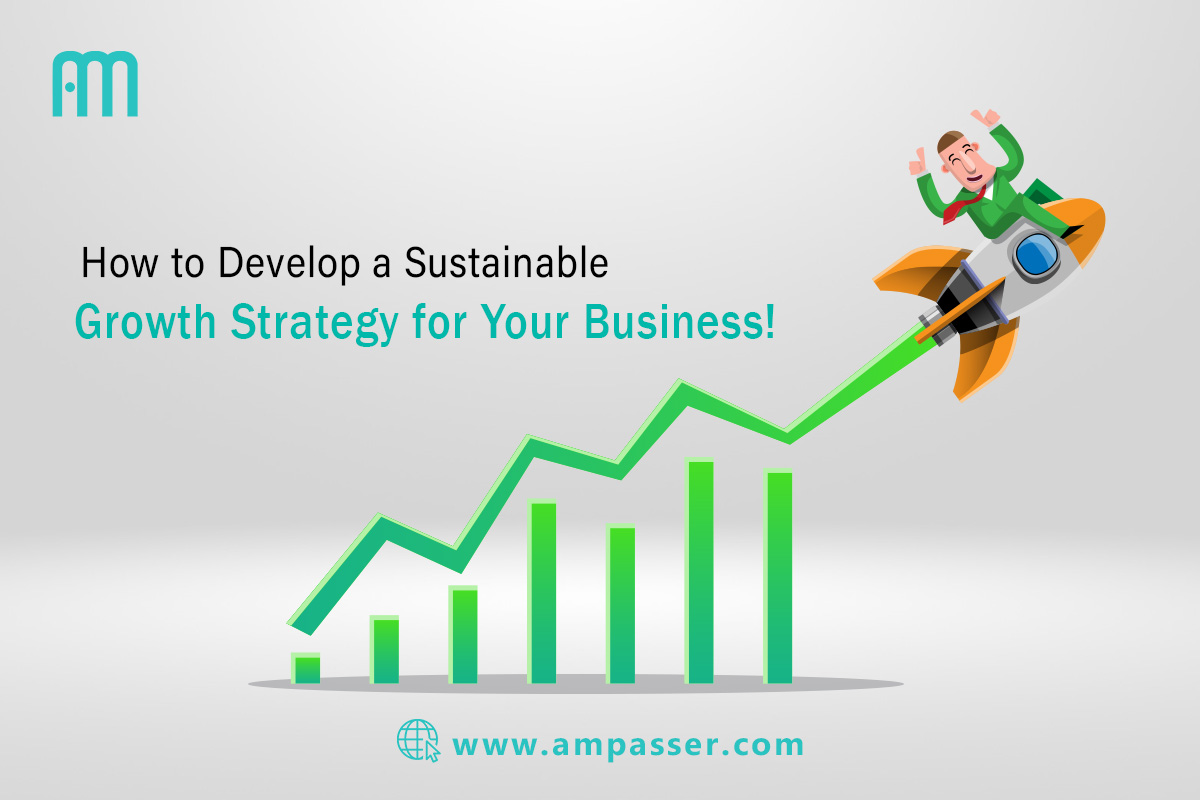In today’s fast-paced business world, creating a sustainable growth strategy is essential for long-term success. As a business owner, it’s important to have a strategy in place that can help you scale, attract loyal customers, and achieve consistent profitability. In this blog, we’ll explore the key components of developing a growth strategy that will support the long-term success of your business.

1. The Importance of Setting SMART Goals for Business Growth
Setting SMART goals (Specific, Measurable, Achievable, Relevant, and Time-bound) has been shown to increase the likelihood of business success by up to 30%. Businesses that set clear and actionable goals can track progress, adjust strategies in real-time, and better align resources. In fact, research by Harvard Business Review reveals that people who write down their goals are 42% more likely to achieve them, making goal-setting a key component of sustainable business growth.
When you define clear goals, your team can work together more efficiently, and you’ll be able to measure success more accurately. Without goals, you risk wandering without direction. A well-structured business strategy starts with a clear vision and measurable milestones.
2. Customer Retention is More Cost-Effective than Acquisition
Studies show that it’s 5 times cheaper to retain existing customers than to acquire new ones. By focusing on improving customer satisfaction and providing exceptional service, businesses can achieve higher retention rates. According to a study by Bain & Company, a 5% increase in customer retention can lead to a 25%–95% increase in profits, highlighting how nurturing relationships can drive long-term success.
A solid customer retention strategy can also reduce your dependency on constantly acquiring new clients, making your business more stable. It’s important to invest in your customer experience, ensuring clients feel valued and connected to your brand over time.
3. The Role of Automation in Increasing Business Efficiency
Businesses that adopt automation tools for repetitive tasks can increase productivity by 30% or more. According to McKinsey, automation in industries like manufacturing and customer service can significantly reduce costs and free up resources for more strategic initiatives. By automating processes, companies not only save time but also improve accuracy, enabling them to scale without a proportional increase in costs.
Automation tools can help streamline operations, improve accuracy, and reduce errors. From automating email marketing campaigns to customer relationship management (CRM) systems, leveraging automation can help your business grow while maintaining efficiency.
4. The Impact of Social Media Marketing on Business Growth
Research from Statista shows that 73% of marketers believe their efforts through social media have been “somewhat effective” or “very effective” in growing their businesses. Additionally, businesses that engage in social media marketing see 54% more leads than those that don’t, making it an essential tool for modern business growth. Engaging with customers on platforms like Facebook, Instagram, and LinkedIn can expand brand reach, build customer loyalty, and drive sales.
Social media marketing is more than just posting updates; it’s about creating engaging, interactive content that speaks to your target audience. By developing a consistent social media strategy, you can reach a wider audience and build meaningful relationships with customers, boosting your bottom line.
5. Diversifying Revenue Streams Can Help Businesses Achieve Stability
Diversification is key to achieving financial stability. Harvard Business Review reports that companies with multiple revenue streams are less vulnerable to economic downturns and market changes. By expanding into new markets, offering complementary products, or creating new services, businesses can reduce their dependency on a single source of income, ensuring continuous growth even in uncertain conditions.
Expanding your revenue model helps mitigate risks and creates new opportunities for growth. Whether it’s launching a new product line or exploring new market segments, diversifying your revenue streams gives your business the stability it needs for long-term success.
Developing a sustainable growth strategy is an ongoing process that requires careful planning, flexibility, and continuous evaluation. By setting clear SMART goals, focusing on customer retention, leveraging automation, utilizing social media, and diversifying your revenue streams, you can ensure your business grows in a sustainable, stable, and profitable manner.
At Ampasser Digital Marketing Agency, we specialize in helping businesses like yours create sustainable growth strategies that drive real results. Whether you’re looking to improve your online presence, generate more leads, or increase sales, we can help you implement strategies that work.
Contact us today to schedule a free consultation and learn how we can help you develop a sustainable growth strategy for your business!
